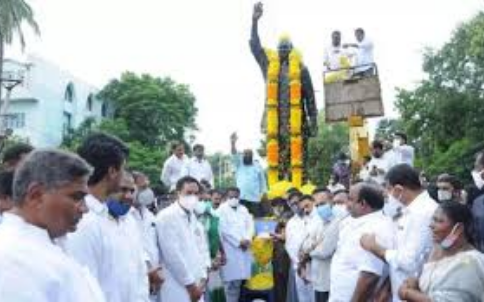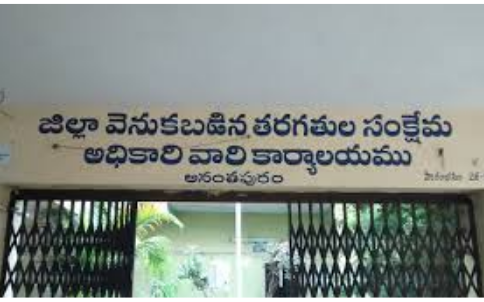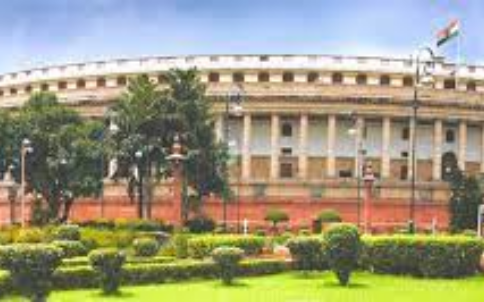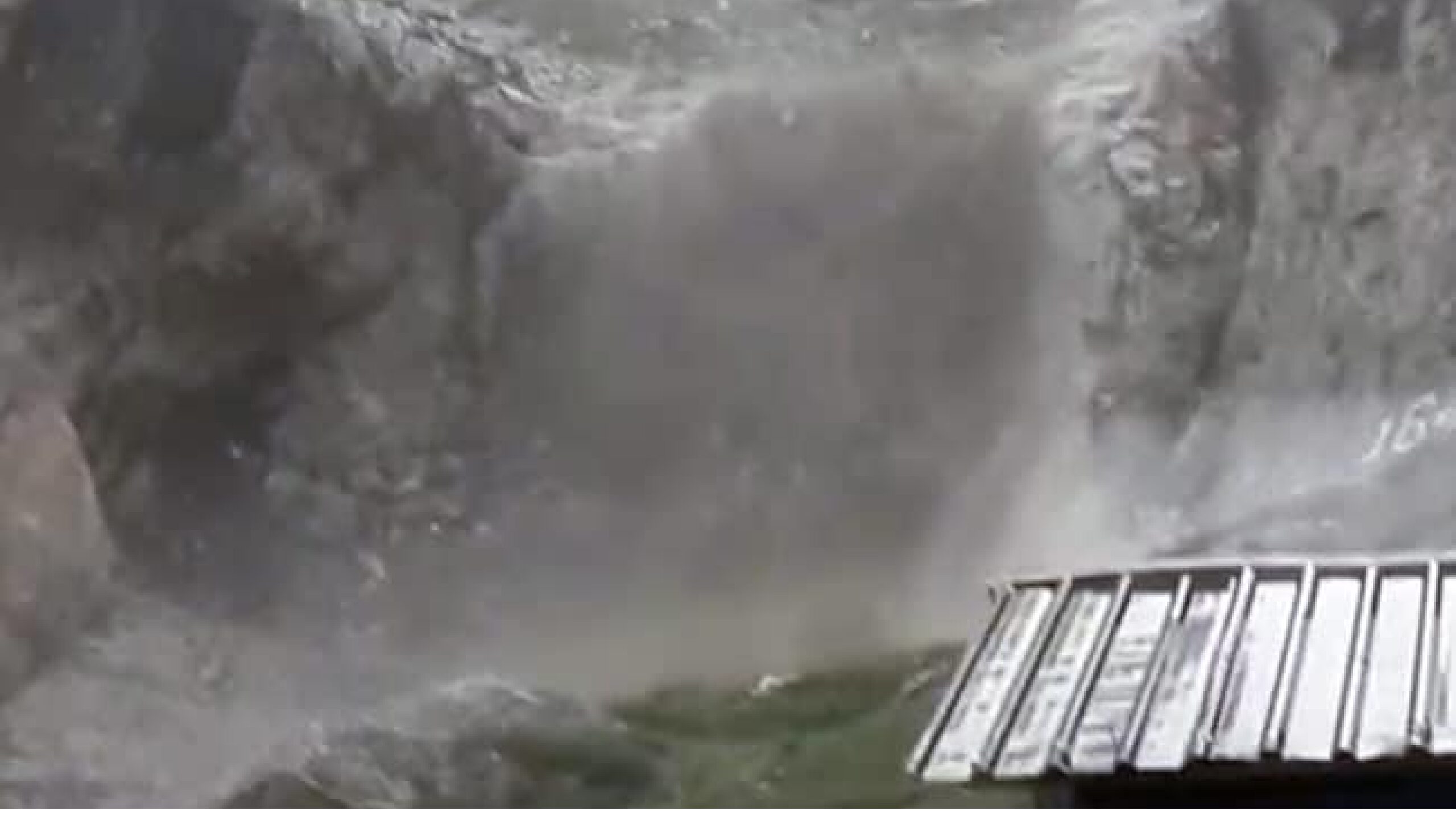States power to determine BCs restored
The anti-federal centralization in determining the BCs by an amendment to the Constitution was corrected by another Constitutional amendment. Now the states can decide who, in their area the backward castes are and provide reservations. The federal power and sovereignty of states was restored from 15th August 2021, when the Constitution (One Hundred and Fifth Amendment) Act, 2021 was notified it’s commencement by the Ministry of Social Justice and Empowerment provides. The 105thAmendment Act received the assent of the President in August. It restored the power of the State Governments and Union Territories to identify and specify ‘Socially and Economically Backward Classes’ (SEBCs).
Also read: Chambers of Secrecy and Torture
Role of NCBC
Article 340 of our Constitution also provided that the President shall establish a commission to examine the condition of social and backward class.The National Commission for Backward Classes (NCBC) was established under the National Commission for Backward Classes Act, 1992. The 102nd Constitutional Amendment Act, 2018 while giving constitutional status to NCBC also empowered the President to notify the list of SEBCs for any state or union territory for all purposes, which means that states’ have no power to declare new castes as BCs. States and UTs can only recommend. This became controversial and constitutionally complex with courts striking down the BC lists made by the States.
Also read:PM CARES “Fund”but CARES not the RTI
The National Commission for Backward Classes became a Constitutional body as validated by 123rd Constitutional Amendment Bill, 2017 which ultimately became 102nd Amendment Act, 2018, under Article 338B of our Constitution. The NCBC works under the Ministry of Social Justice and Empowerment, established on 14 August 1993.

Supreme Court’s directions
The origin of this Commission is as per the direction of the Supreme Court in Indra Sawhney & Others v. Union of India on16.11.1992 in Writ Petition (Civil) No. 930 of 1990 [(1992) Supp. 3 SCC 217]. The Supreme Court directed the Government of India, State Governments and Union Territory Administrations to constitute a permanent body in their respective territories in the nature of a Commission or Tribunal for entertaining, examining and recommending upon requests for inclusion and complaints of over-inclusion and under-inclusion in the list of OBCs. This direction because the Supreme Court noticed that the Constitution recognised only social and educational – and not economic – backwardness.
Also read: The status of women in India
The 102nd Amendment
The Parliament passed The Constitution (102nd Amendment), Act, 2018 to insert Article 338B to establish National Commission for Backward Classes, which came into effect from 11th August 2018. The text of article is:
Article 338B. National Commission for Backward Classes.— (1) There shall be a Commission for the socially and educationally backward classes to be known as the National Commission for Backward Classes.
(2) Subject to the provisions of any law made in this behalf by Parliament, the Commission shall consist of a Chairperson, Vice-Chairperson and three other Members and the conditions of service and tenure of office of the Chairperson, Vice-Chairperson and other Members so appointed shall be such as the Presidentmay by rule determine.
(3) The Chairperson, Vice-Chairperson and other Members of the Commission shall be appointed by the President by warrant under his hand and seal.
(4) The Commission shall have the power to regulate its own procedure.
The duties of the Commission
Article 338B(5) explained the duties of the NCBC.
It shall be the duty of the Commission—
(a) to investigate and monitor all matters relating to the safeguards provided for the socially and educationally backward classes under this Constitution or under any other law for the time being in force or under any order of the Government and to evaluate the working of such safeguards;
(b) to inquire into specific complaints with respect to the deprivation of rights and safeguards of the socially and educationally backward classes;
(c) to participate and advise on the socio-economic development of the socially and educationally backward classes and to evaluate the progress of their development under the Union and any State;
(d) to present to the President, annually and at such other times as the Commission may deem fit, reports upon the working of those safeguards;
(e) to make in such reports the recommendations as to the measures that should be taken by the Union or any State for the effective implementation of those safeguards and other measures for the protection, welfare and socio-economic development of the socially and educationally backward classes; and
(f) to discharge such other functions in relation to the protection, welfare and development and advancement of the socially and educationally backward classes as the President may, subject to the provisions of any law made by Parliament, by rule specify.
(6) The President shall cause all such reports to be laid before each House of Parliament along with a memorandum explaining the action taken or proposed to be taken on the recommendations relating to the Union and the reasons for the non-acceptance, if any, of any of such recommendations.
(7) Where any such report, or any part thereof, relates to any matter with which any State Government is concerned, a copy of such report shall be forwarded to the State Government which shall cause it to be laid before the Legislature of the State along with a memorandum explaining the action taken or proposed to be taken on the recommendations relating to the State and the reasons for the non-acceptance, if any, of any of such recommendations.

The powers of the NCBC
Article 338B(8) provided for the powers of the NCBC:
The Commission shall, while investigating any matter referred to in sub-clause (a) or inquiring into any complaint referred to in sub-clause (b) of clause (5), have all the powers of a civil court trying a suit and in particular in respect of the following matters, namely:—
(a) summoning and enforcing the attendance of any person from any part of India and examining him on oath;
(b) requiring the discovery and production of any document;
(c) receiving evidence on affidavits;
(d) requisitioning any public record or copy thereof from any court or office;
(e) issuing commissions for the examination of witnesses and documents;
(f) any other matter, which the President may, by rule, determine.
(9) The Union and every State Government shall consult the Commission on all major policy matters affecting the socially and educationally backward classes.
Also read: The Power of questioning& Scientific Temper
The list of Backward Castes
The question was who will have the authority to fix criterion and declare a caste as backward caste. Prior to 102nd Amendment Act, the prevalent practice was that States and Union would specify their own lists respectively called state list and union list.
The centre wanted to clothe the NCBC with the same powers as the Scheduled Castes and Scheduled Tribes Commission.Hence used expressions almost identical e to the words used relating to the SC/ST Commission. The new Article 342A says that the President shall notify a list of SEBCs in relation to each State and Union Territory in consultation with the Governors. Act called it the ‘Central List’, and once it is notified, only Parliament alone could make changes to it.
Also read: Our leaders and their scientific temper!
The Centre vociferously argued both in court and outside that neither the Centre nor Parliament intended to take away the State’s power to identify SEBCs. The use of the term, ‘Central List’, meant that what the President notified was a list of backward classes for the purpose of the Central government and its instrumentalities, and did not affect the lists maintained by the various States. The opposition did not agree with this argument.
In the Union list of the (Other Backward Castes) OBCs the number of Backward Castes (BC) has increased to 5,013 and above as per National Commission for Backward Classes. This number does not include the figures for most of the Union Territories. The criterion for being recognized as OBC was fixed in October 2015, by the National Commission for Backward Classes. A person belonging to OBC with an annual family income of up to ₹15 lakhs should be considered as minimum ceiling for recognising that person as OBC. The NCBC suggested sub-classification of OBCs into ‘backward’, ‘more backward’ and ‘extremely backward’ blocs and divide the 27% quota amongst them in proportion to their population, to ensure that stronger OBCs do not corner the quota benefits.
Also read: Whether Act 2014 authorised Centre to takeover rivers?
The demand to include in the BC list was coming up from different caste groups in different states to secure positive support in education and employment opportunities. Similarly, Marathas were agitating the BC status for reservation benefits., the Maharashtra legislature under BJP rule has passed a law recognising Marathas as a Socially and Educationally Backward Class for fixing a quotain jobs and education.
After the 102nd Amendment Act, 2018 came into force, the Maharashtra governmentconstituted an 11-member committee headed by Justice (retd) NG Gaikwad which studied and concluded that the Maratha community to be a socially, educationally, and economically backward class. The Marathas were classified under an independent category called Socially and Educationally Backward Class (SEBC). A bill was passed granting 16 per cent reservation in government education and employment for Marathas, on 30 November 2017. With this the reservations in Maharashtra stood at a total of 68 percent.
Also read: Oxygen RTI is not about life or liberty- says CIC
Advocate JaishriLaxmanrao Patil filed a writ petition challenging the power of the Maharashtra legislature to categorise the Marathas as SEBC and on the ground that it violated the Supreme Court verdict in Indra Sawhney case capping reservations at 50 percent.The Bombay High Court has upheld the validity of Maratha Reservations law in 2019, but quashed the 16 percent quota, saying the quota should not exceed 12 percent in employment and 13 percent in admissions to government-run educational institutes.
States’ power is removed
The Supreme Court in Maratha Quota CaseJaishriLaxmanrao Patil vs Union of India,[Livelaw citation; LL 2021 SC 243] has held on 5 May 2021, that the 102ndConstitution Amendment has abrogated the power of states to identify “Socially and Educationally Backward Classes (SEBCs)”. It has struck down the Maharashtra State Reservation for SEBC Act of 2018 that granted reservation to the Marathas.A Constitution Bench of the Supreme Court, held by 3:2 majority, that States lacked the power to identify and specify SEBCs after the 102ndConstitution Amendment Act, which introduced Articles 338B and 342A to the Constitution, according to which “the final say in regard to inclusion or exclusion (or modification of lists) of SEBCsis firstly with the President, and thereafter, in case of modification or exclusion from the lists initially published, with the Parliament”.
The states can, through their existing mechanisms, or even statutory commissions, only make suggestions to the President or the Commission under Article 338B, for inclusion, exclusion or modification of castes or communities, in the list to be published under Article 342A (1). As per Article 342A, President may with respect to any State or Union territory, and where it is a State, after consultation with the Governor thereof, by public notification, specify the socially and educationally backward classes which shall for the purposes of this Constitution be deemed to be socially and educationally backward classes in relation to that State or Union territory, as the case may be.
Also read: Sedition: Patel would have jailed Socialists!
Three judges held, Article 342A of the Constitution by denuding States power to legislate or classify in respect of “any backward class of citizens” does not affect or damage the federal polity and does not violate the basic structure of the Constitution of India, the Court (3:2).Justice Ravindra Bhat explained the majority view: “Parliament, through the 102ndAmendment clearly intended that the existing legal regime for identification of communities as SCs and STs and for their inclusion in the list of SCs and STs under Articles 341 and 342, which had hitherto existed, ought to be replicated in relation to identification of SEBCs”
The bench held, breaching the 50 percent ceiling in reservation, unless there are exceptional circumstances, violates Article 14 of the Constitution, as it upheld the apex court judgment in the Indra Sawhney case of 1992.
Also read: The Centre Robs Rivers of States
The majority judgment interpreted the 102nd Amendment as follows:
- By introduction of Articles 366 (26C) and 342A through the 102nd Constitution of India, the President alone, to the exclusion of all other authorities, is empowered to identify SEBCs and include them in a list to be published under Article 342A (1), which shall be deemed to include SEBCs in relation to each state and union territory for the purposes of the Constitution.
- The states can, through their existing mechanisms, or even statutory commissions, only make suggestions to the President or the Commission under Article 338B, for inclusion, exclusion or modification of castes or communities, in the list to be published under Article 342A (1).
- The reference to the Central List in Article 342A (2) is the one notified by the President under Article 342A (1). It is to be the only list for all purposes of the Constitution, in relation to each state and in relation to every union territory. The use of the term “the Central List” is only to refer to the list prepared and published under Article 342A (1), and no other; it does not imply that the states have any manner of power to publish their list of SEBCs. Once published, under Article 342A (1), the list can only be amended through a law enacted by Parliament, by virtue of Article 342A (2). (iv) In the task of identification of SEBCs, the President shall be guided by the Commission set up under Article 338B; its advice shall also be sought by the state in regard to policies that might be framed by it. If the commission prepares a report concerning matters of identification, such a report has to be shared with the state government, which is bound to deal with it, in accordance with provisions of Article 338B. However, the final determination culminates in the exercise undertaken by the President (i.e. the Central Government, under Article 342A (1), by reason of Article 367 read with Section 3 (8) (b) General Clauses Act).
- The states’ power to make reservations, in favour of particular communities or castes, the quantum of reservations, the nature of benefits and the kind of reservations, and all other matters falling within the ambit of Articles 15 and 16 – except with respect to identification of SEBCs, remains undisturbed.
- The Commission set up under Article 338B shall conclude its task expeditiously, and make its recommendations after considering which, the President shall expeditiously publish the notification containing the list of SEBCs in relation to states and union territories, for the purpose of the Constitution.
- Till the publication of the notification mentioned in direction (vi), the existing lists operating in all states and union territories, and for the purposes 132 of the Central Government and central institutions, continue to operate. This direction is issued under Article 142 of the Constitution of India.
States power not removed, the minority view
Minority view of Justice Ashok Bhushan and S. Abdul Nazeer was that the 102ndConstitutional amendment does not take away the power of the State to identify backward class in the State, as argued by the Attorney General K. K. Venugopal.
(29) We are of the view that word ‘Central’ in Article 342A (2) was used for purpose and object. The use of ‘Central’ was only with the intent to limit the list issued by the President to Central services. It is well settled rule of interpretation that no word in a statute or Constitution is used without any purpose. Word ‘Central’ has to be given meaning and purpose.
Also read: The law for River Water Disputes
(30) When we have interpreted Article 342A to mean that Article 342A refers to ‘Central List’ which is prepared for services under the Government of India and organisations under the Government of India, the definition given under Article 366(26C) which specifically refer to Article 342A has to be read together and list of backward classes which is not Central List shall not be governed by the definition under Article 366(26C). Since, the (26C) has been inserted in the context of Article 342A, if the context is list prepared by the State and it is State List, definition under (26C) shall not govern.
(31) We, thus, hold that Article 342A was brought by Constitution 102nd Amendment to give constitutional status to National Backward Classes Commission and for publication of list by the President of socially and educationally backward classes which was to be Central List for governing employment under Government of India and the organisations under it.
In his separate judgement Justice L.Nageswar Rao, agreed with Justice Bhat’s interpretation of 102nd Amendment. “There is only one list that can be issued by the President specifying the socially and educationally backward classes and only those classes are treated as socially and educationally backward classes for the purposes of the Constitution. Only those backward classes included in the public notification under Article 342 A shall be socially and educationally backward classes for the purposes of the Constitution.”, the Judge said. Justice Gupta also agreed with Justices Nageswar Rao and Bhat.
Restoring the states’ power: 105th Amendment
The effect of 102ndamendment and the judicial interpretation was that nearly 671 OBC communities would have lost access to reservation in educational institutions and in appointments if the state lists areconsidered invalid. It was estimated that nearly one-fifth of the total OBC communities would have been adversely impacted by this 102nd Amendment. The states agitated. The units of ruling BJP were also pressing for the restoration of powers to the states. It was also analysed that India has a federal structure and to maintain that structure, this amendment was essential. Such a central oversight is not proper and practical. The law should allow states to respond to socio-economic requirements which are specific to a state or region, faster.
Also read: River Management Boards
The opposition political parties continued to blame the Centre for enacting a flawed law that led to the court concluding that theCentre took away powers of the states. A strong political consensus was developed on the point that the Supreme Court’s interpretation required to be undone by amending the Constitution, if required once again to clarify the State’s role in identifying SEBCs. It was introduced as the Constitution (127th Amendment) Bill, 2021. After its passage and on receiving presidential assent, it was notified as the Constitution (105th Amendment) Act, 2021.
The hurried and unthoughtful102ndAmendment and Maratha quotajudgement necessitated the 105th Amendment to the Constitution to restore the powers of the states.The 105th Amendment Act was passed unanimously by all the 385 MPs present and voting. There was not a single opposition.
This 105th Amendment added clause (3) to Article 342A to clarify that states and union territories will have the power to identify and specify SEBCs for their own purposes and that such list may differ from the Central list. After insertion of Articles 366(26C) and 338B (9), states now will be able to directly notify OBC and SEBCs without having to refer to the NCBC, and the “state list” will be taken out of the domain of the President and will be notified by the Assembly.
Also read: Punish Police for Using Dead Section 66A for Contempt
The earlier requirement that the National Backward Classes Commission should be consulted on policy matters will not apply to the State lists of SEBCs. It specifies that the list of SEBCs notified by the President shall be only for the purposes of the Central government alone, and that the ‘Central List’ means only the list “prepared and maintained by and for the Central Government”. Further, it has clarified that every State or Union Territory may, by law, prepare and maintain for its own purposes a list of SEBCs and this may be different from the Central List.
Thus, this amendment has overridden the interpretation of the Supreme Court in Maratha Quota Case by clarifying that the State Government and the Union Territories are empowered to prepare and maintain their own State List/ Union territory list of SEBCs
In the midst of several centralized legislations passed recently by the Centre, this is the only law that has recognized the power of states. First it centralized the power and later amended to decentralise. However, the issue of ceiling the reservations at 50 per cent remained indecisive. The Minister for Social Justice while introducing the bill urged the states not to exceed reservations the limit of 50 percent, unless there existed exceptional circumstances. Question is; What are those exceptional circumstances? This can be answered only by the Courts. Hence the problem continues to agitate the minds of executive, legislature and judiciary on where to exceed 50 per cent quota.
Also read: CJI’s worthy solution to Water Dispute
Prof M Sridhar Acharyulu, Former Central Information Commissioner and Dean, School of Law, Mahindra University, Hyderabad




